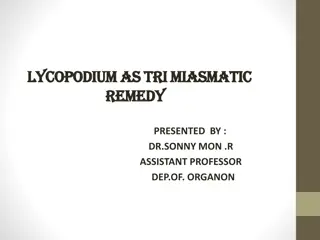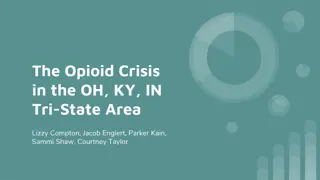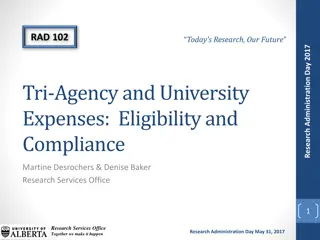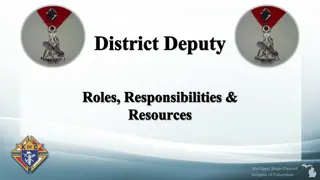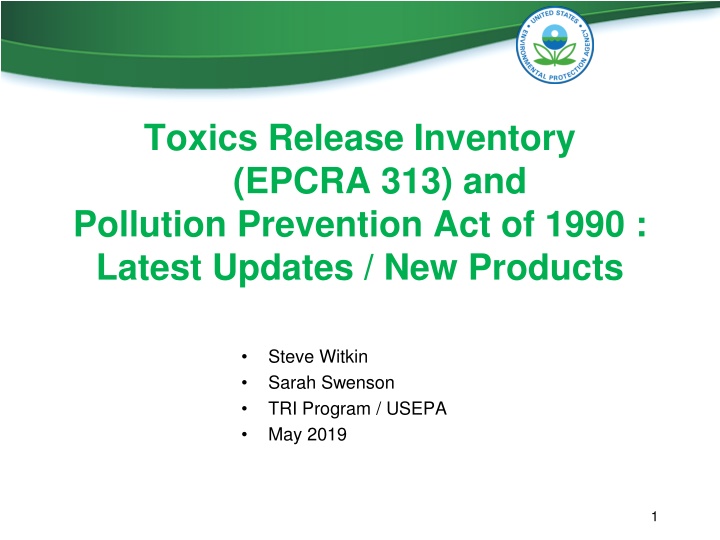
Toxics Release Inventory (TRI) Program Overview and Updates
"Discover the latest information on the Toxics Release Inventory (TRI) program, including data tracking, reporting, and waste management of toxic chemicals. Learn how TRI data informs regulations and environmental research. Stay updated on TRI resources, contacts, and annual data cycles."
Download Presentation

Please find below an Image/Link to download the presentation.
The content on the website is provided AS IS for your information and personal use only. It may not be sold, licensed, or shared on other websites without obtaining consent from the author. If you encounter any issues during the download, it is possible that the publisher has removed the file from their server.
You are allowed to download the files provided on this website for personal or commercial use, subject to the condition that they are used lawfully. All files are the property of their respective owners.
The content on the website is provided AS IS for your information and personal use only. It may not be sold, licensed, or shared on other websites without obtaining consent from the author.
E N D
Presentation Transcript
Toxics Release Inventory (EPCRA 313) and Pollution Prevention Act of 1990 : Latest Updates / New Products Steve Witkin Sarah Swenson TRI Program / USEPA May 2019 1
Presentation Overview 3 Minute Summary of TRI How You Can Use TRI Data and information TRI Program Updates TRI Resources and Contacts May 7, 2019 U.S. Environmental Protection Agency 2
What is the Toxics Release Inventory (TRI)? Reporting program tracking the waste management of certain chemicals Facilities report to states/tribes and to EPA each year TRI includes information on: And much more! Waste transfers Pollution prevention Releases Recycling May 7, 2019 U.S. Environmental Protection Agency 3
Purpose of TRI Information To inform persons about releases of toxic chemicals to the environment; to assist governmental agencies, researchers, and other persons in the conduct of research and data gathering; to aid in the development of appropriate regulations, guidelines, and standards; and for other similar purposes. 42 USC 11023(h) 4 May 7, 2019 U.S. Environmental Protection Agency
Summary of Available Data You already know TRI has data on: Quantities chemicals released to air, water, land One-time/accidental releases Pollution prevention (P2) and source reduction activities You may not know TRI data include: Name of receiving waterbody and REACH code (for surface water discharges) Maximum amount of each chemical on site (a range) Quantities of waste managed (not released) Quantity of each chemical shipped off-site (annually) and name of each receiving facility Method of data estimation Method of waste treatment 5 5
Annual TRI Data Cycle TRI forms due every July 1 for the previous year s data Preliminary dataset available in July Ongoing data quality checks and compliance assistance TRI National Analysis (EPA s annual TRI report) is published in January Note that previous years data are retained and periodically refreshed May 7, 2019 U.S. Environmental Protection Agency 6
Available tools and information* TRI Program website TRI Program background and basics TRI-covered industries and chemicals TRI reporting requirements Examples of how TRI data have been used Tools for: *Certain content is available in Spanish Community outreach Quick looks and basic analyses Advanced analyses Basic relative potential risk screening May 7, 2019 U.S. Environmental Protection Agency 7
Basic Program Info Facility resources Data access and analytic tools Community resources May 7, 2019 U.S. Environmental Protection Agency 8
How can TRI data and information be used? You already know you can use TRI to find: Annual release quantities One-time or accidental release quantities You may not know you can use TRI data to: Look at chemical release trends over time for a particular facility, ZIP code locality, or county Map facilities sending and receiving chemical waste Prioritize local efforts to reduce pollution from facilities Promote tech transfer of innovative P2 activities: from facilities successfully using P2 to facilities that could start using similar approaches May 7, 2019 U.S. Environmental Protection Agency 9
Other Uses of TRI Prepackaged content for community outreach Inform county planning and zoning decisions Local/state/tribal priority-setting based on relative potential risk Identify local facilities treating toxic waste in an environmentally responsible manner May 7, 2019 U.S. Environmental Protection Agency 10
TRI Program Updates Chemical Additions First Year to Be Reported 2016 1-Bromopropane Hexabromocyclododecane (HBCD) category 2017 Nonylphenol Ethoxylates category 2019 PFAS Chemicals EPA s PFAS Action Plan (Feb 2019) lists 2019 as date to start activities to consider additions. Toxics Use Reduction Institute (TURI) Petition 25 Chemicals under review to determine if they meet TRI listing requirements No earlier than 2020 May 7, 2019 U.S. Environmental Protection Agency 11
TURI Chemicals Formamide 2,5-dinitrotoluene Hexahydrophthalic Anhydride Dibutyltin dichloride (DBTC) 1,2,3-trichlorobenzene 1,3,4,6,7,8-Hexahydro4,6,6,7,8,8- hexamethylcyclopenta(g)-2-benzopyran 1,3-Dichloro-2-propanol n-propyl bromide (1-bromopropane) Hexabromocyclododecane Aminoethylethanolamine Nitrilotriacetic acid, trisodium salt Tris(2-chloroethyl) phosphate p-a,a,aTetrachlorotoluene N-methylformamide Tris(1,3-dichloro-2-propyl) phosphate (TDCPP) 1,1 - Azobis(formamide) Nonylphenol (Added to TRI RY 2019) N,Ndimethylacetamide Trixylyl phosphate 4-tertOctylphenol=1,1,3,3- Tetramethyl-4-butylphenol Triglycidylisocyanurate,TGIC,Teroxirone, Tris(epoxypropyl) isocyanurate Cyclododecane Hexahydromethyl phthalic anhydride 2,3-dinitrotoluene Diphenyl ether, octabromo derivative May 7, 2019 U.S. Environmental Protection Agency 12
TRI Program Updates Documents / Web Site Changes Factors to Consider When Using TRI Data Document Revised March 2019 New TRI for Researchers Web Page TRI for Tribal Communities Web Page Major Revision Introduction to TRI for Industry (Online) Slide Presentation Tailored for Industry Activities in Progress Factors to Consider Document Broad Overhaul How TRI Relates to Other EPA Programs Document / Visual Document New / Rework Starter Kit New Aid May 7, 2019 U.S. Environmental Protection Agency 13
TRI Program Updates Tools Changes MyRTK Mobile App for Citizens Balanced tool Preformatted reports / Summary level results Data Access tool Improved Mapping and Search Function Editorial clean-up Multiple minor bugs fixed TRI Explorer EZ Query QA review, update to query logic Major update to documentation Consolidation of References / Technical Updates Basic and Basic Plus Files Guide-ME Downloadable data files Guidance Search Tool May 7, 2019 U.S. Environmental Protection Agency 14
Connect With Us Email bulletin sign-up in right hand sidebar of www.epa.gov/tri May 7, 2019 U.S. Environmental Protection Agency 15
Contacts tri.help@epa.gov (TRI staff will respond) TRI Program Contacts: Steve Witkin: Witkin.Steve@epa.gov Sarah Swenson: Swenson.Sarah@epa.gov Judy Kendall, Regional/State Liaison: Kendall.Judith@epa.gov Shelley Fudge, Community/EJ/Tribal Coordinator : Fudge.Shelley@epa.gov Wayne Davis, RSEI lead: Davis.Wayne@epa.gov May 7, 2019 U.S. Environmental Protection Agency 16
Regional and State Contacts TRI Regional Coordinators: www.epa.gov/tri/regionalcoordinators TRI State Coordinators: https://www.epa.gov/toxics-release-inventory- tri-program/tri-state-contacts May 7, 2019 U.S. Environmental Protection Agency 17
Resources Toxics Release Inventory Program: www.epa.gov/tri TRI National Analysis: www.epa.gov/trinationalanalysis Risk-Screening Environmental Indicators (RSEI): www.epa.gov/rsei TRI Data and Tools: www.epa.gov/tri/tri-data-and-tools TRI GuideME: Searchable TRI guidance documents, Q & As, and reporting instructions TRI for Communities: www.epa.gov/tri/communities TRI & P2: www.epa.gov/tri/p2 May 7, 2019 U.S. Environmental Protection Agency 18



